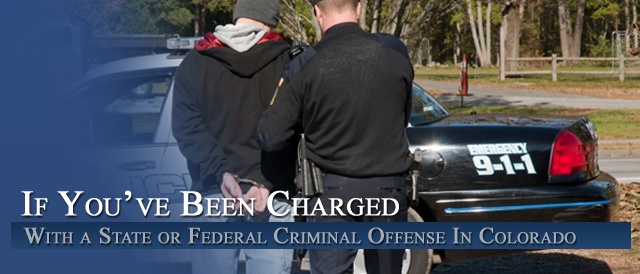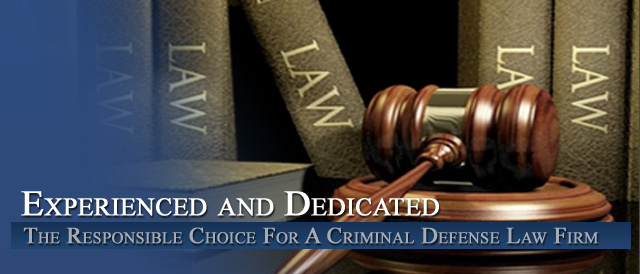




Colorado Criminal Defense Law: Understanding The Difference Between Misdemeanor Eluding – 42-4-1413 vs Felony Eluding Cases – 18-9-116.5
By Colorado Criminal Defense Lawyer for the Defense of Misdemeanor and Felony Eluding Cases – H. Michael Steinberg
Introduction – People who are stopped by the police in Colorado can be charged with either a misdemeanor or a felony eluding charge depending upon the facts and the police involved. Know your rights – this article explains the difference – Understanding The Difference Between Misdemeanor – 42-4-1413 vs Felony Eluding Cases – 18-9-116.5
This is the Colorado Crime of MISDEMEANOR ELUDING
Section 42-4-1413,, provides:
Any operator of a motor vehicle who the officer has reasonable grounds to believe has violated a state law or municipal ordinance, who has received a visual or audible signal such as a red light or siren from a police officer driving a marked vehicle showing the same to be an official police, sheriff or Colorado state patrol car directing the operator to bring the operator’s vehicle to a stop, and who willfully increases his or her speed or extinguishes his or her lights in an attempt to elude such police officer, or willfully attempts in any other manner to elude the police officer, or does elude such police officer, commits a class 2 misdemeanor traffic offense. Section 42-4-1413 C.R.S.
This is the Colorado Crime of FELONY ELUDING
Section 18-9-116.5, C.R.S provides
A person commits the offense of vehicular eluding if he or she: (1) “knowingly eludes or attempts to elude a police officer who is also operating a motor vehicle,” and (2) “knows or reasonably should know that he [or she] is being pursued by said police officer.” Section 18-9-116.5, C.R.S.
When are you charged with the higher offense.. Well, one recent case helps make the point in the following analysis: (from People v. Pena, 962 P.2d 285 (Colo.App. 1997) Court of Appeals of Colorado October 2, 1997)
Defendant points out that the police officer did not have his lights or siren activated during much of the chase, and he relies on the testimony of the passengers in his car that they had not seen any police lights until after the car crashed.
However, the police officer testified that defendant’s car accelerated after the officer activated his lights and siren and that the chase then continued for another quarter of a mile. This evidence was sufficient to convince a rational juror beyond a reasonable doubt that defendant knew the police officer was pursuing him and that he knowingly attempted to elude the officer.
… the record here contains evidence that defendant’s conduct went beyond that proscribed by the misdemeanor eluding statute. In particular, the arresting officer testified that defendant swerved in and out of traffic, crossed the center line, and collided with other vehicles during the chase. This evidence constitutes proof of an element contained in the felony eluding statute but not found in the misdemeanor eluding statute, i.e., that defendant drove “in a reckless manner, creating a substantial risk of bodily injury to another person.” Section 18-9-116.5.
Summary of Colorado Eludiing Law:
Thus felony eluding occurs when a person willfully attempts to flea or elude a pursuing law enforcement vehicle that is being driving with at least one lighted lamp displaying red or red and blue lenses, or while the siren is activated.
Here is the Actual Colorado Felony Eluding Law 18-9-116.5 CRS:
18-9-116.5. Vehicular eluding. (1) Any person who, while operating a motor vehicle, knowingly eludes or attempts to elude a peace officer also operating a motor vehicle, and who knows or reasonably should know that he or she is being pursued by said peace officer, and who operates his or her vehicle in a reckless manner, commits vehicular eluding.
(2) (a) Vehicular eluding is a class 5 felony; except that vehicular eluding that results in bodily injury to another person is a class 4 felony and vehicular eluding that results in death to another person is a class 3 felony.
(b) Notwithstanding section 18-1.3-401, the minimum sentence within the presumptive range for a violation of this section shall be increased as follows: (I) For a class 5 felony, the minimum fine shall be two thousand dollars; (II) For a class 4 felony, the minimum fine shall be four thousand dollars; and
Certain Defenses to Colorado Vehicular Eluding
The most common defense we see for Colorado Vehicular Eluding is the defense of “lack of knowledge”. This occurs when a person does not realize that the officer is behind them (because they have their stereo on loud and they are looking straight ahead while driving at night) or because they believe the Officer is chasing somebody else.
The Government must prove the elements of the offense beyond a reasonable doubt. It must be shown that the person “knowingly” attempted to elude police.
Other times, a person will realize that the police have activated their lights behind them, but the person is waiting to pull over in a safe, well-lit area before stopping their car. This occurs most often on the freeway where people wish to make an exit off the busy portion of the roadway before stopping their cars.
The role of eyewitness testimony and accident reconstruction in the case of an accident is critical – especially if you are charged with causing injury or death during the “chase.” At the law office of H. Michel Steinberg , we work with our own investigators, psychologists, forensic specialists, and other professionals in defending people charged with vehicular manslaughter or vehicular homicide. We collect eyewitness testimony and work with accident investigators in determining why a fatal accident happened, exposing assumptions on the part of prosecutors that are not supported by the available evidence.
Sometimes police officers become upset, and they will add the charge of Vehicular Eluding from Police to what would have otherwise been a normal misdemeanor traffic citation. It is critical to interview all available witnesses (if there were any) in order to show this was not a true “Flight”.
Data can be downloaded from the statistical and diagnostical module (i.e., the “Black Box”) from newer model vehicles. If that data is downloaded, it can be shown that there was no high rate of speed, no rapid acceleration, and no other indication of true “intent to flee”.
The “Common Defenses”, which may apply in any criminal case are numerous and diverse. One of the most common defenses is a Miranda Rights Violation.” In Colorado, the standard of whether any inculpatory statement (i.e., a statement which tends to admit guilt) is admissible into evidence is based upon a “Voluntariness” standard.
If it can be demonstrated that the police coerced the suspect (i.e., intimidated or tricked you) into making a confession or inculpatory statement, or the police did not properly read you your Miranda Rights, then the suspects statements and any evidence gathered as a direct result of those statements may not be admissible at trial.
“Denial of Right to Counsel” is another common defense which is often raised. This occurs when a suspect is in custody and requests to speak to their lawyer, but is denied and questioning continues.
Finally, one of the most common defenses is exposing sloppy or misleading police reports which include everything from misstatements, false statements, flawed photo line-ups and inaccurate crime scene reconstruction.
Other Articles of Interest:
- Colorado Criminal Law – A Case to Assist in Understanding the Affirmative Defense of Duress in a Case of Vehicular Eluding
- 025. COLORADO CRIMINAL CODE – OFFENSES AGAINST PUBLIC PEACE, ORDER, AND DECENCY – HARASSMENT ETC
- 002. COLORADO CRIMINAL CODE – OFFENSES AGAINST PERSONS – HOMICIDES
- Colorado Criminal Defense Law: Criminally Negligent Homicide (18-3-105)
- Charging a Juvenile as an Adult in Colorado












